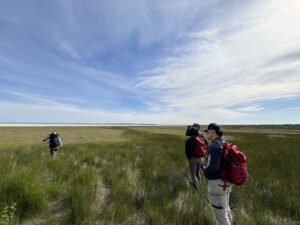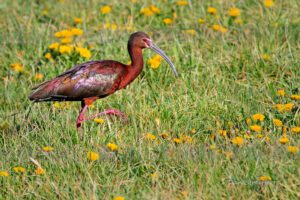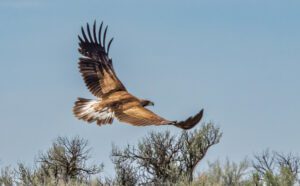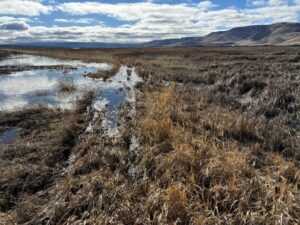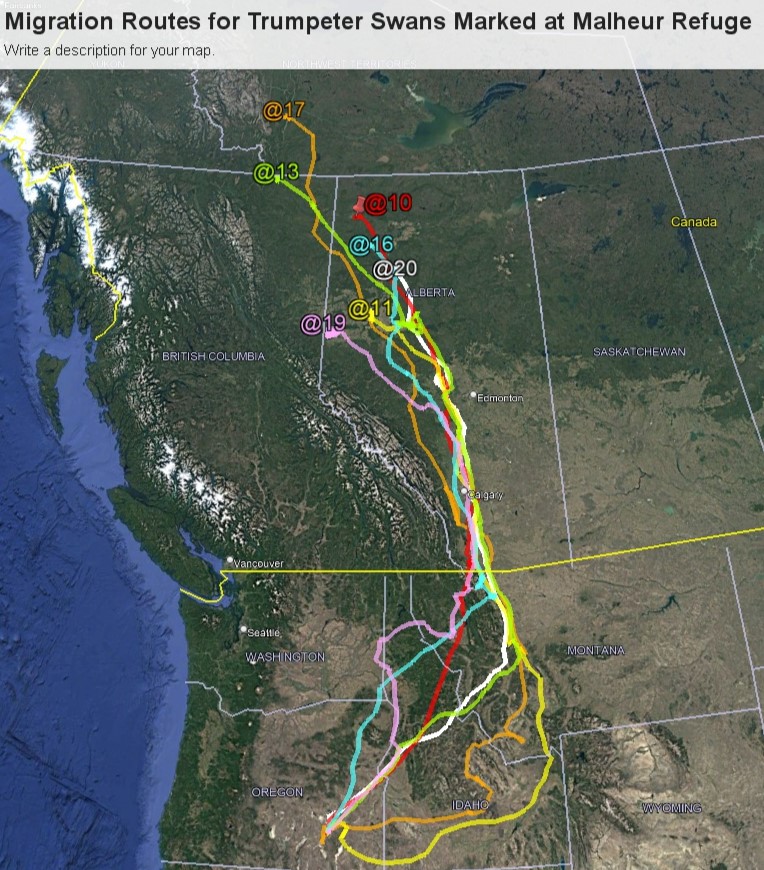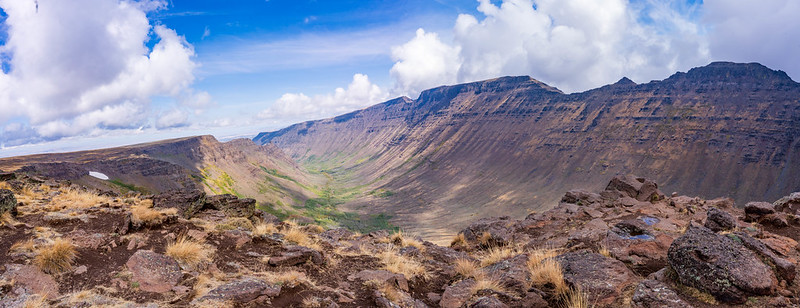Written by Teresa “Bird” Wicks, Portland Audubon Society Eastern Oregon Field Coordinator/Photo by Teresa Wicks
This spring has been a particularly wet one at Malheur National Wildlife Refuge. Between spring snowmelt and rainstorms, things are lush and green throughout the Refuge. Particularly in the Blitzen River Valley, where the main channel of the river is rushing with abundant runoff from Steens Mountain. As water levels rise in the Blitzen River and in the east and west canals, more snow has been deposited on Steens. Because of the snow, the Bureau of Land Management is saying that the loop road likely won’t be open until July!
As expected, the water and weather have affected birds on the Refuge, with the first-of-the-year Eastern Kingbird recorded May 27th, during the second round of Woody Riparian Landbird surveys. Woody Riparian Landbird surveys are one of several spring Inventory and Monitoring (I&M) surveys at Malheur. These I&M surveys provide data about management efforts on the Refuge, including management of wet meadows, riparian areas, springs, and lacustrine habitat (lakes and impoundments). Additionally, I&M survey priorities are selected to meet state, local, and regional efforts.
Many of the spring avian I&M surveys are completed via a partnership between Portland Audubon and Malheur NWR. Portland Audubon has been involved at Malheur since its designation as a wildlife reservation in the early 1900s. Over approximately the past decade, Portland Audubon has provided seasonal biological staff, to complete biological surveys and docent work with the Refuge. Finally, last year, Portland Audubon hired me as their full-time year-round Eastern Oregon Field Coordinator. This has allowed Portland Audubon to work more closely with our Eastern Oregon partners, including Malheur NWR and Friends of Malheur NWR.
I started with Portland Audubon in April 2018, making this spring my second field season at Malheur. One of the more interesting things about the difference between last winter/spring and this winter/spring is the amount of water everywhere. While Malheur Lake still hasn’t reached the Narrows (It will! Soon!), many of the canals, ponds, and wetlands are brimming with water, including in places that last season seemed like there should have been water but wasn’t. As a student of nature, this dichotomy (abundant water vs little water) is providing important lessons. Lessons that are potentially clouded by the near-constant rain that May brought to the Harney Basin. But, they are lessons nonetheless. Some of these lessons include remembering that when the water is hip deep, and the clouds are emptying their contents on the field you’re in, you can definitely still make it back to the truck. The wildflowers that this wet winter and spring have called forth have been a lesson in remembering to stop and enjoy the hidden beauty of this place that provides solitude, solace, and endless vistas.
This spring’s data are an important addition to the I&M database. The lessons that we will learn, as more information is added to this database, will help shape management and conservation efforts at Malheur. These lessons are less subtle than wildflowers and more subtle than water levels, and will help create successful strategies for adapting to a changing climate.


